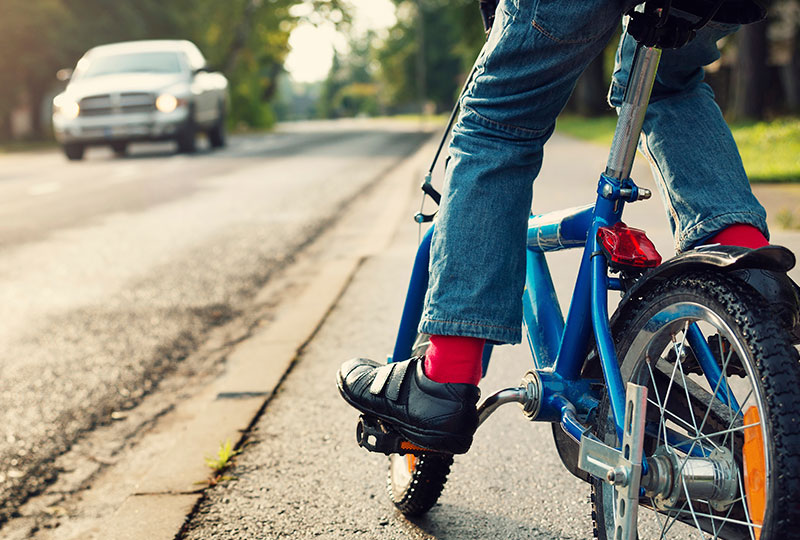Are you ready for the two-wheeling season? Check out these bike safety tips.
It’s time to celebrate National Bike to School Day. These six bike safety tips will help get your kids ready for the road.
1. Use your head; wear a helmet.
It’s the law in Nashville; any child under 16 must wear a helmet while riding. Visit nashville.gov for proper fit advice.
“Nationally, more children ages 5 to 14 are seen in emergency rooms for injuries related to biking than any other sport,” says Purnima Unni, MPH, CHES. She is the Pediatric Trauma Injury Prevention Program manager at Monroe Carell Jr. Children’s Hospital at Vanderbilt. “Helmets can reduce the risk of severe brain injuries by 88 percent,” Unni adds.
2. Check equipment.
Make sure your child’s bicycle fits. Visit the United States Department of Transportation website for a guide to proper adjustments. Before your child heads out on a ride, check that tires are sufficiently inflated and that the brakes work.
3. Be visible.
No matter what time of day your child is riding, make sure he or she is wearing bright-colored clothing. Add reflective tape to his or her backpack. The bicycle should have proper reflective gear as well. If your child will be riding at dawn or dusk or after dark, a white front headlamp and a flashing rear lamp and rear reflector (yes, both!) are required.
4. Know where to ride.
In general, cyclists should ride with the flow of traffic and stay to the right (in a bike lane if there is one). If your child is younger than 10, however, the United States Department of Transportation recommends riding on the sidewalk and following “sidewalk versus street riding” precautions.
5. Obey the rules of the road.
Cyclists are required to follow the same traffic rules as cars. This means they must stop at red lights and stoplights, yield when required and yield to pedestrians. Cyclists should also use proper hand signals when turning.
6. Be alert.
Teach your child to watch for potholes, cracks, debris, cars backing out from driveways and cars parked on the side of the road. A car door could open unexpectedly or a driver could pull out from a parking spot.
“Distracted cycling — like distracted anything — has a negative impact on a person’s behavior,” Unni says. “Cyclists who are either wearing headphones or using a smartphone are possibly less likely to hear ambient traffic sounds, such as other bicycle bells, and may possibly disobey traffic rules compared to riders who are not using these devices.”

